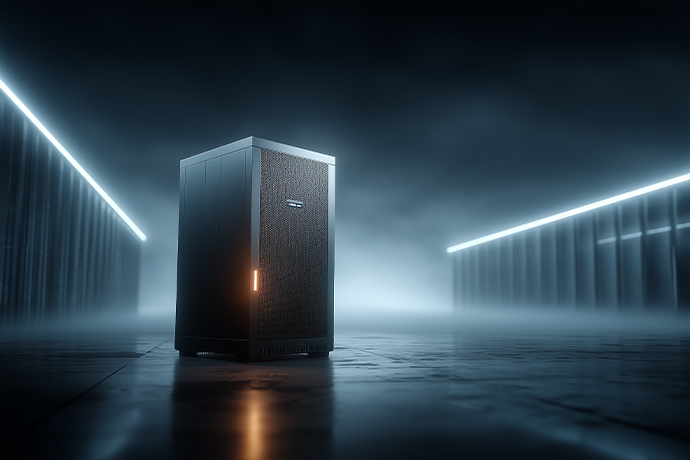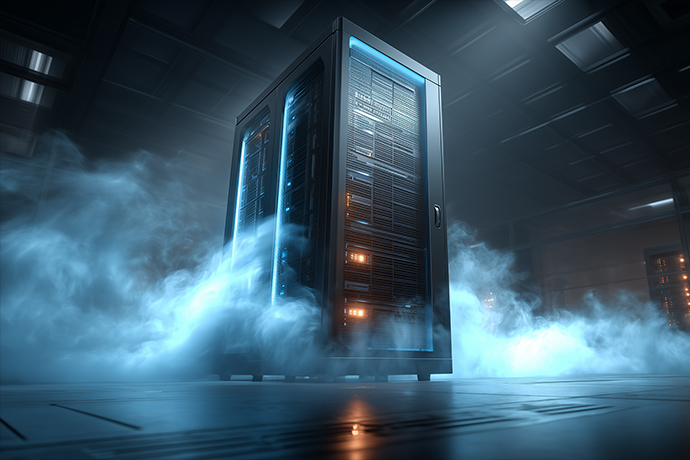Traditionally data center power was built on one overriding principle: ensure uptime, often by significant over-provisioning. The focus was on distribution, which meant there was little visibility into how power was actually being used at a granular level. While this model worked for its time, it lacks the precision needed for modern IT infrastructure. The industry has since evolved, adopting a new model that uses data to provide clear visibility, enabling active management of both efficiency and resilience.
The revolution didn’t come from a new server or a faster switch. It started silently, inside the server rack, with the evolution of a device once dismissed as a commodity: the Power Distribution Unit (PDU). The transformation of the PDU from a “simple” power strip into an intelligent, data-gathering nerve center is the single most important, yet overlooked, story in modern infrastructure management.
From Power Distribution to Data Acquisition
The fundamental shift is in purpose. While the traditional PDU merely distributes power, an intelligent PDU acquires and transmits operational data. It is the primary sensory input for the entire data center ecosystem. By measuring voltage, current (A), real power (kW), and energy consumption (kWh) at the outlet level, the PDU provides the high-fidelity data stream that forms the foundation of all meaningful optimization.
Without this granular data, concepts like Power Usage Effectiveness (PUE) are little more than marketing fluff. The PUE formula, PUE= Total Facility Energy / IT Equipment Energy , is only as accurate as its denominator. Estimating the IT load leads to a flawed metric. Intelligent PDUs provide the precise, real-time IT equipment energy value, transforming PUE from a vague annual target into an actionable, real-time diagnostic tool.
Translating Raw Data into Operational Intelligence
This stream of data is the lifeblood for any modern Data Center Infrastructure Management (DCIM) platform. It allows operators to move from a reactive stance to a state of predictive, data-driven control.
- Eradicating Energy Waste: PDU data immediately illuminates “ghost servers” and underutilized assets, whose constant power draw drains budget and capacity. By identifying these, organisations can consolidate workloads and decommission zombie hardware, instantly improving rack density and deferring capital expenditure.
- Building Proactive Resilience: Downtime doesn’t just happen; it’s often preceded by warning signs. Intelligent PDUs are the early warning system. By setting custom thresholds, they send alerts when a rack’s power draw approaches a circuit’s limit, long before an overload occurs. When paired with environmental sensors, they detect thermal anomalies and humidity spikes—the silent killers of IT hardware allowing for pre-emptive intervention.
- Enabling Intelligent Capacity Planning: How do you know when you need more power? In the past, the answer was often “when the lights go out.” Today, PDU data provides clear trend analysis. It shows not only current usage but also growth over time, enabling managers to forecast future needs with startling accuracy. This prevents costly over-provisioning and ensures that power infrastructure scales precisely with business demand.
The Hyperscale Imperative: Intelligence as a Foundational Principle
Nowhere is this philosophy more critical than at extreme scale. In a facility like a Yotta hyperscale data center, which operates on an industrial level, where micro-inefficiencies can multiply into massive macro-level costs. For us, intelligent power management isn’t a feature; it’s an architectural mandate. Our entire operational model is built upon a foundation of granular data acquisition, from the PDU in the rack to the chillers in the plant. This creates a hyper-efficient ecosystem where every watt is accounted for.
This meticulous approach delivers immense value to our clients. When you house your critical infrastructure in a Yotta colocation data center, you are plugging into this ecosystem of intelligence. You benefit from the resilience that comes from predictive analytics and the cost-efficiency passed down from our operational excellence. It provides the assurance that your digital assets are not just powered but managed with a level of precision that is simply unattainable in a less sophisticated environment.
The Future is Switched On
The evolution continues. Switched PDUs now grant operators the ability to remotely power cycle individual outlets. A frozen server no longer requires a “remote hands” ticket or a physical visit; it can be rebooted securely from a central dashboard. This capability, combined with programmed power sequencing, is vital for bringing equipment online in a controlled manner, preventing damaging inrush currents and ensuring network stability.
Ultimately, the intelligent PDU is no longer just about distributing power; it’s about providing the intelligence that unlocks lower operational costs, greater uptime, and truly sustainable scalability. It is the pulse of the rack, and a strong pulse means a healthy, high-performing data center.
If you’re still relying on legacy power distribution methods, you’re likely overpaying for inefficiencies. It’s time to embrace intelligent power management and partner with a data center provider that has mastered performance at scale.















